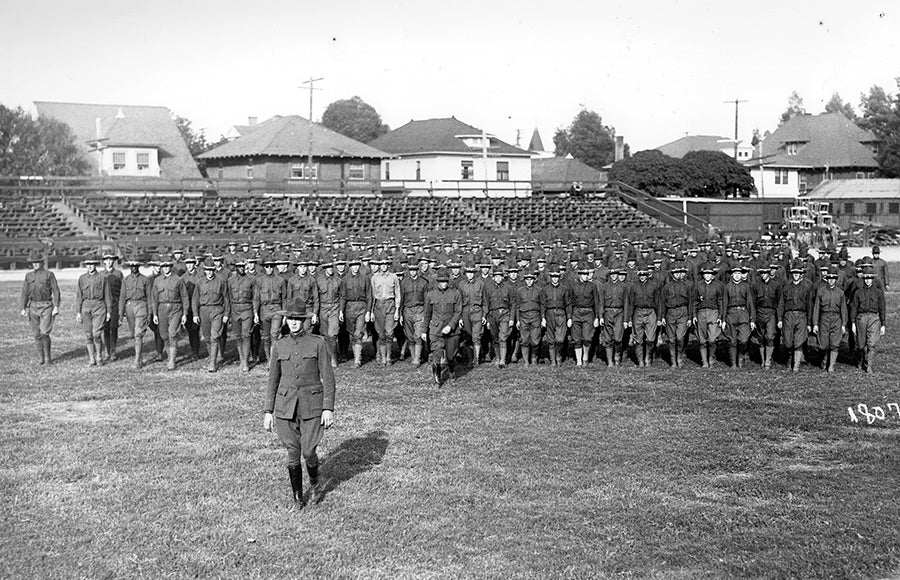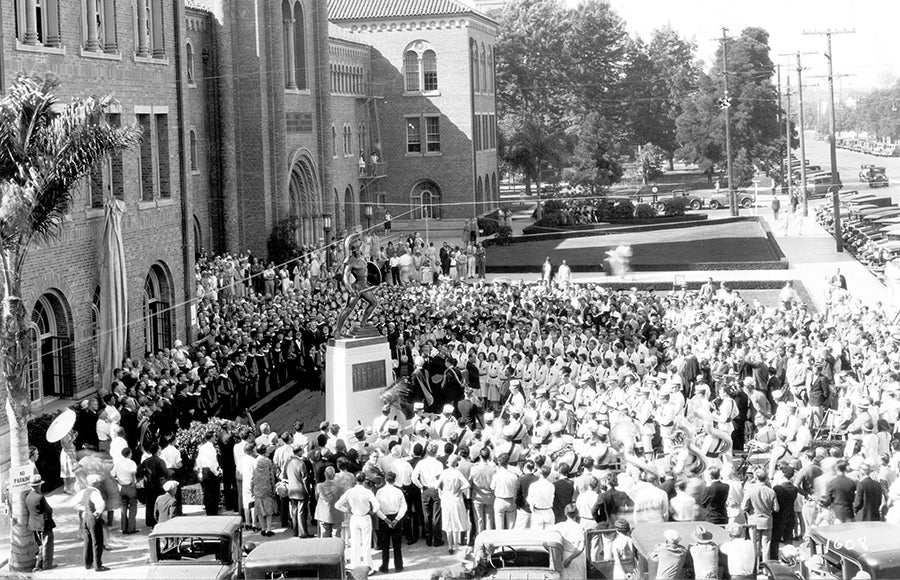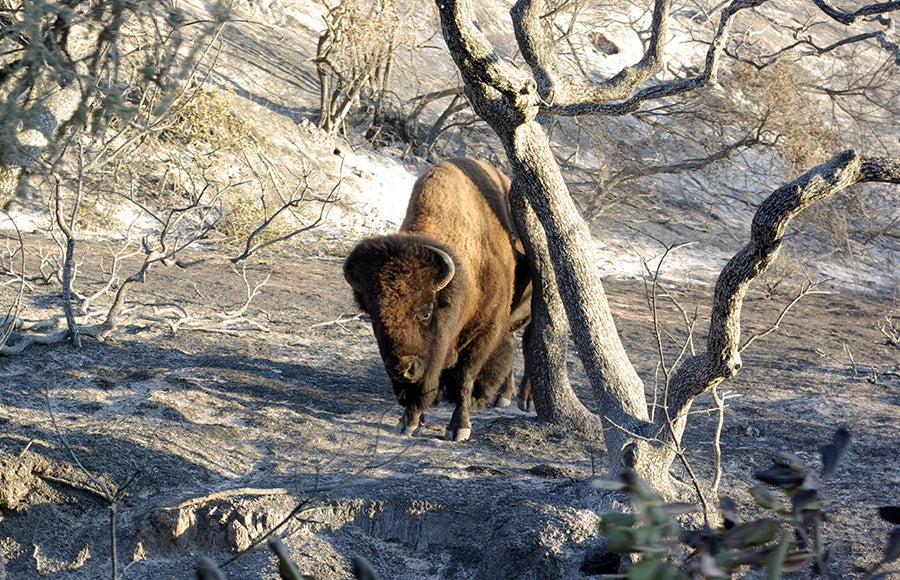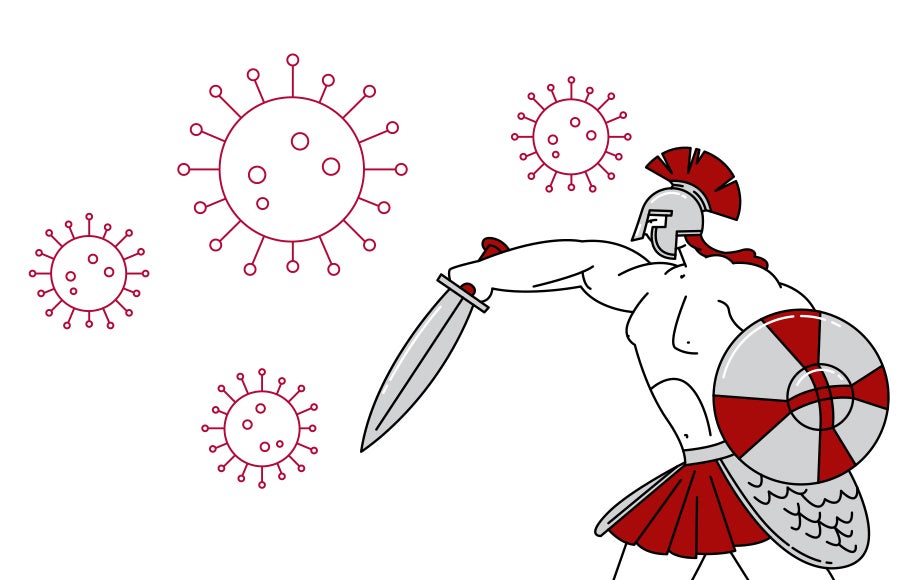
True Grit: Fighting On Since 1880
Resilience is in USC’s blood. The university has persevered, survived — and thrived — through two world wars, a great depression, a great recession, uprisings, earthquakes and, following the Spanish flu of 1918-20, is now living through its second pandemic. Our nickname, “Trojans,” an ode to the fighting spirit of the mythological Trojan army, could not be more apt.
It is not just our perseverance that matters, but also how we adapt. Catastrophic events can help forge character, toughen spirits and strengthen our resolve to shape the world.
“Some of the most interesting forms of resilience are seizing the most unexpected moment to make something of it that wasn’t there before,” says USC Dornsife Professor of Philosophy Mark Schroeder.
Beth Meyerowitz, professor of psychology and preventative medicine, agrees. Her research on how cancer survivors cope, finds many feel they benefited from the experience. “Resilience is not something a person either has or doesn’t have, it’s how the person responds to, or handles, a stressful situation,” she says.
The same can be true for institutions, and right from the beginning, resilience was built into USC’s DNA. The university was founded in 1880, occupying a single building erected on acres of mustard fields, in the middle of the raw frontier town of Los Angeles. The railroad linking the town to San Francisco had arrived four years earlier, but early USC students still walked dirt roads to class.
World War I
When the United States entered World War I in 1917, USC leapt into action. It launched a Reserve Officers Training Corps program and transformed gym classes into training courses while faculty formed a military company.

To prepare trainees for trench warfare, a system of trenches with trip wires and gun and mortar emplacements were laid out across Exposition Park. Scientists in the chemistry lab busied themselves producing trinitrotoluene, or TNT. Instructed by the military to provide physicians, USC allowed medical students to graduate early and to complete residency on military bases. On Oct. 1, 1918, nearly 900 USC students were inducted into service on Bovard Field.
Spanish Flu
Meanwhile, what was to become the deadliest influenza epidemic in history was circling the globe. For some of these freshly recruited student soldiers, like Harvey Wendt, the two events intersected — with tragic results. Wendt, a skilled member of the debate team, graduated in 1918 and volunteered for service in the Medical Corps. He died later that year when an outbreak of the Spanish flu swept through the trenches in France.
By October, the virus had reached L.A. City leaders acted swiftly, closing public gathering places and suspending film production. Their quick actions meant L.A. County had a lower death toll per capita than other metropolitan areas, but more than 2,700 people still died of the disease in the city of L.A.
USC closed its doors during this period. War training continued on campus, however, with field drills and some 700 student-soldiers packing the bleachers for a class entitled “War Aims.”
This dark chapter in history didn’t halt the Trojan advance. In October 1919, the cornerstone for the Bovard Administration Building was laid.
In 1921, the L.A. Memorial Coliseum, named in memory of veterans of the Great War, opened its doors to cheering sports fans. That same year, USC launched an ambitious $10 million fundraising campaign for campus infrastructure.

The Great Depression
In 1929, the stock market crashed and the country entered the Great Depression. Undeterred, USC celebrated its 50th anniversary the following year and unveiled the iconic Tommy Trojan statue.
But with nearly a third of Californians out of work by 1932, enrollment at USC declined and revenue shrank. USC founded a junior college for students unqualified for four-year California universities, which brought in additional funds, and launched groundbreaking educational radio and TV programs, which boosted USC’s profile.
Despite the catastrophic economic downturn, USC’s expansion was able to continue apace with four major buildings added to campus, including Mudd Hall of Philosophy.
World War II
The shadow of global conflict returned to campus in December 1941, when the U.S. entered World War II. More than 70 faculty members marched off to service and by 1945, three-quarters of male students were in uniform. Young men studied at USC while training to become officers in the U.S. Army, Navy or Marines. In 1943 and ’44, hundreds of students in the enlisted reserves and officer training corps were suddenly called to active duty, many before graduating.
Seven decades later, alumna Peggy Kalpakian Johnson remembered the chilling experience of watching those active duty students head to war from USC. “Buses were parked along University Avenue and the men slowly entered them, single file,” she said. “World War II changed the entire world, but on a very personal level it changed the lives of everyone who stood there in the sunshine at USC bidding silent farewell.”
Many USC Dornsife alumni also fought in World War II, among them Louis Zamperini, an Olympic runner turned WWII bombardier who survived two years in a Japanese prison camp, showing exemplary Trojan commitment to service on the frontlines. The 2014 film Unbroken, produced and directed by Angelina Jolie, was based on Zamperini’s life.
When the war ended, USC rebounded and by 1948 surpassed its record for student enrollment.
L.A. Uprisings
Protests against systemic racism and police brutality have deep roots in L.A. Recent uprisings have historical parallels, among them the 1992 protests over the acquittal of four police officers involved in the violent arrest of Rodney King. When looting and fires swept perilously close to campus in 1992, USC implemented a robust emergency plan. No buildings were damaged and students helped with clean-up once the protests subsided.

After the event, USC reevaluated its relationship with the surrounding community, establishing programs with five local schools to provide quality education to neighboring residents. The initiative grew into partnerships with 15 schools that now comprise the USC Family of Schools.
Thomas Gustafson, associate professor of English and American studies and ethnicity, remembers the era as transformative for USC Dornsife. Studying L.A. gained new importance, with a revived American studies major and newly created majors in Chicano/Latino, African American and Asian American studies.
“For me,” Gustafson says, “USC’s response was not to respond as humans usually do to fire or anger — a fight or flight response — but to understand through all our academic disciplines, the sources of that fire in a history of injustice.”
Wildfire

In 2007, USC was again under threat. On May 10, 2007, a wildfire roaring across Santa Catalina Island came within 10 miles of the USC Wrigley Marine Science Center. Power and phone lines were incinerated. Staff worked tirelessly to save animals and valuable frozen specimens threatened by the loss of power, even improvising a “bucket-brigade” system using a truck battery to keep water fresh for a tank of sea bass.
Although it would take months for full communications to be restored, the center continues to thrive today, while its scholars make crucial progress on issues of sustainability and environmental preservation through classwork and a host of research projects.
Coronavirus
Now, the COVID-19 pandemic has brought new challenges to USC. In order to maintain safety, students, faculty and staff adapted to virtual classes, a postponed commencement and a near-empty campus. Many USC Dornsife alumni continue to tackle the virus on the frontlines. The Trojan Family has stepped up to support one another, forging a world-class online education, donating personal protective equipment to hospital workers and contributing funds to help Trojans worst affected by this crisis. Meanwhile, tens of thousands came together to enjoy an inspirational virtual celebration of the Class of 2020 in May, with the promise of reuniting on campus next year for commencement.

For those searching for hope on the horizon, consider these words from a Daily Trojan editorial from February 1919. Just a few months earlier, the influenza outbreak had brought the city to its knees. War had darkened the campus for more than a year. Despite this almost unimaginable intersection of events, Trojans were ready to rebound.
“The war in Europe is over, each day the campus gets a new thrill from a newly returned uniform. Influenza is passé. And besides all this, ‘spring is cub’ and every student, from the lowliest freshman to the mightiest senior, has a perfect right to be happy.”
Read more stories from USC Dornsife Magazine’s Spring/Summer 2020 issue >>